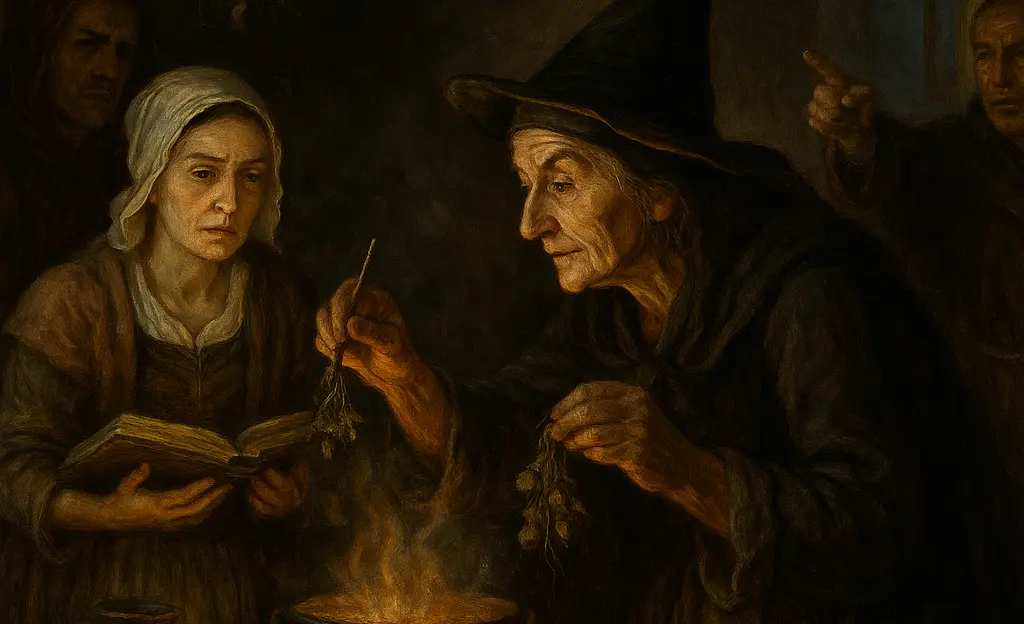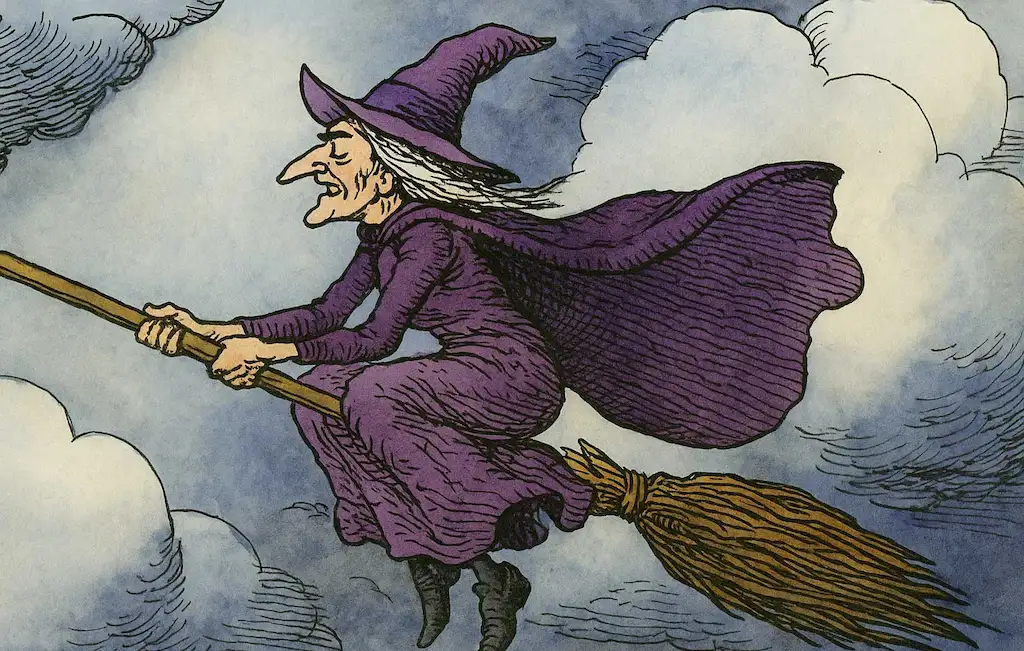Have you ever wondered why witches ride brooms? The image of a witch flying across the moon on a broomstick is iconic, especially around Halloween. But the story behind this mysterious association is much more complex and fascinating than most people think.
The Origin of Witches
Early witches were individuals who practiced witchcraft, which often involved casting spells, making herbal remedies, and calling upon spirits for guidance or change. These people, many of whom were women, were often known as “wise women” or natural healers in their communities.
While some saw them as helpful, others believed they were doing the Devil’s work, especially as Christianity spread throughout Europe. This fear and misunderstanding laid the groundwork for centuries of suspicion and persecution.

One of the earliest recorded mentions of a witch appears in the Bible, specifically in the Book of 1 Samuel, written between 931 B.C. and 721 B.C. The passage tells the story of King Saul and the Witch of Endor.
Several other passages in the Old Testament condemn witchcraft and practices linked to it. The Bible also warns against divination, chanting, and attempts to communicate with the dead. These verses played a major role in how society viewed witches throughout the Middle Ages and during events like the Salem witch trials.
The Origins of Witches and Brooms
The word broom comes from the name of the plant or shrub that was once commonly used to make sweeping tools. Over time, it gradually replaced the Old English term besom, although both words were used until at least the 18th century. From the start, brooms and besoms were strongly associated with women and became a powerful symbol of female domesticity.
Despite this strong female association, the first recorded confession of riding a broomstick came from a man: Guillaume Edelin. Edelin, a priest from Saint-Germain-en-Laye near Paris, was arrested in 1453 for witchcraft after criticizing the church’s fear-driven warnings about witches. Under torture, he confessed to flying on a broomstick. Although he later repented, he was sentenced to life in prison.
Even before Edelin’s confession, the image of witches flying on broomsticks was well known. The earliest known visual depiction of this dates to 1451, found in the manuscript Le Champion des Dames (“The Defender of Ladies”) by the French poet Martin Le Franc. The manuscript contains two illustrations—one shows a woman flying through the air on a broom, while the other rides a simple white stick. Both women wear headscarves that identify them as Waldensians, a Christian sect from the 12th century. The Waldensians were declared heretics by the Catholic Church, partly because they allowed women to serve as priests.
Some historians believe that the connection between witches and broomsticks may have originated from old pagan fertility rituals. In these ceremonies, rural people would jump and dance while straddling brooms, pitchforks, or poles under the full moon, hoping to encourage the growth of their crops. Over time, this practice may have become mixed with tales of witches flying through the night to attend secret gatherings, helping to create the enduring image of the flying witch.


